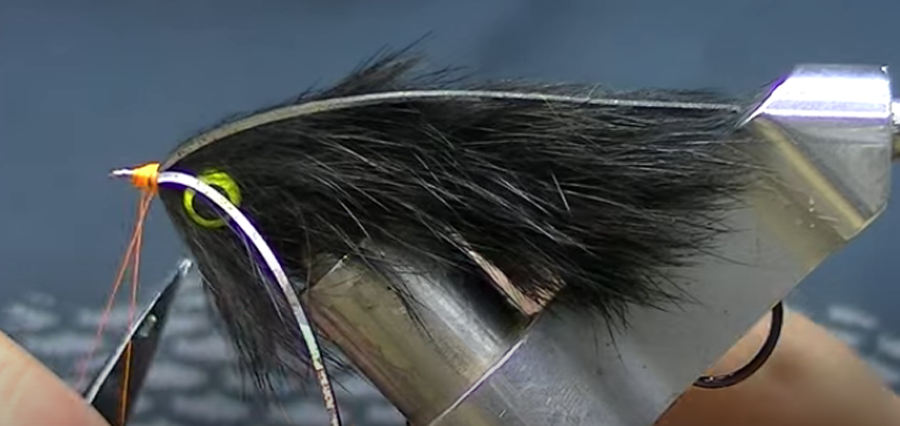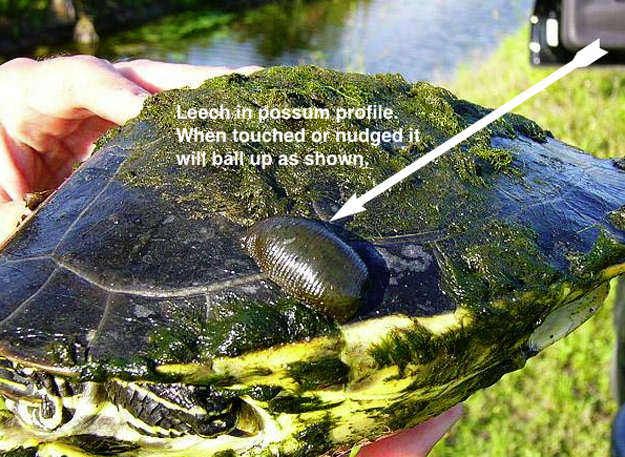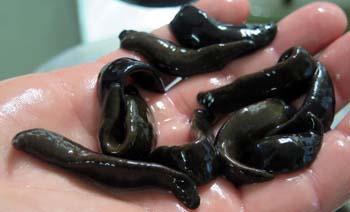
Ruben Martin’s Black Leech Articulated Streamer. For more Ruben Martin fly tying . . .
Leeches are segmented worms that include earthworms, freshwater worms, and marine worms
By Skip Clement
The American Museum of Natural History leech expert Mark Siddall wrote: “Every continent and body of water on the planet has leeches, except Antarctica. And even then, there are marine leeches in Antarctic waters. Humans have co-existed with leeches for so long that just about every language has a word for leech.”
Further, Mark said: “Leeches do not have bristles, and the external segmentation of their bodies does not correspond with the internal segmentation of their organs. Their bodies are much more solid as their coelom (fluid-filled cavity) spaces are dense with connective tissues. They also have two suckers, one at each end, to eat and anchor. For certain animals on land and in freshwater or saltwater, leeches are a feast.”

Leech on a turtle. Trout short strike leeches so they’ll ball up – making it a one-course meal. Image credit Austin Turtle Forum.
Almost 700 species of leeches are currently recognized
Siddall added: “Most leeches don’t suck vertebrates’ blood, but are predatory and live in their environments feeding primarily by swallowing other invertebrates whole. . . . Almost 700 species of leeches are currently recognized, of which 100 are marine, 90 terrestrial (land-based) and the remainder freshwater.”

A handful of leeches from Mille Lacs Lake in Minnesota. The lake was voted the best bass lake in the United States for 2017. The abundance of feed like these leeches keeps the bass and walleye fat and plentiful. Image Dan Kraker / Minnesota Public Radio – News.
Remember, an adequately tied leech pattern is unbalanced – always very weighted and head heavy. When swum, the extra weight should magnify the imbalance. The speed and depth of your retrieve are a seek, and you will find – sometimes quickly, sometimes slowly, but a fish will always materialize if you work for it.
In rivers and streams, leeches seek shelter under things but sometimes drift with the current or hang where there is structure. Remember, they’re always looking for food, like “everybody” else in the water. Sometimes, your entire day’s responses will come from dead drifting a leech pattern.
Black Leech Articulated Streamer fly tying instructions by Ruben Martin:

